If you’ve ever experienced persistent foot pain, there’s a chance it could be due to having high arches. High arches is where the arch of the foot is raised more than usual. Recognising this condition is fairly straightforward; when standing, you’ll notice your foot’s heel and ball carrying most of the weight, with little to no contact of the arch with the ground.
Understanding High Arches
High arches, can often predispose you to biomechanical imbalances such as overpronation and supination. These imbalances overwork your foot muscles, increasing strain and pressure on your feet. The result? A higher susceptibility to various painful foot and lower limb conditions such as Metatarsalgia, Plantar Fasciitis, Achilles Tendinitis, Shin Splints, Knee Tendonitis and even Hip and Back Pain. But don’t worry, at NuovaHealth, we’ve got you covered with our Footreviver orthotic insoles designed for high arches.
How Do Orthotic Insoles for High Arches Work?
Orthotic insoles work by providing the necessary support to your feet, aligning them in the correct position to counterbalance any biomechanical imbalance. For someone with high arches, a pair of orthotic insoles becomes essential as they provide the extra support and protection needed. By supporting your arches in the correct position, these insoles can ease strain and pressure off your feet, making your shoes more comfortable to wear. The importance of this cannot be overstated!
Wearing orthotic insoles for high arches means less worry about discomfort or pain after a long day on your feet. Let’s delve deeper into the specific injuries and conditions that these insoles can help prevent and treat.
Injuries and Conditions Treated with Orthotic Insoles
For Plantar Fasciitis
Plantar Fasciitis, a debilitating overuse injury that affects the heel and arch of the foot, is very common among people with high arches. The condition develops when the plantar fascia, a crucial ligament connecting our heel bone to our toes, becomes inflamed and damaged. This ligament is vital to supporting the arch of the foot, so when the arch is too high, the plantar fascia can become overloaded, leading to this painful condition.
According to statistics from the National Health Service, approximately 1 in 10 people will experience plantar fasciitis in their lifetime. High arches are a leading factor, along with age, weight, and certain types of exercise. A prominent symptom of plantar fasciitis is a stabbing pain in the heel that is most noticeable upon waking or after prolonged sitting.
Ignoring this condition can have long-term implications such as chronic heel pain, hip, knee or back problems due to changes in the way you walk to avoid the pain. Thus, early treatment is crucial. One effective treatment, as identified in a 2016 study conducted by the University of East London, is the use of orthotic insoles designed for high arches. These insoles provide the necessary support to the arch, thereby reducing the strain on the plantar fascia.
For Morton’s Neuroma
Morton’s neuroma is a common yet often misunderstood condition that affects your foot. It’s essentially a thickening of the tissue around one of the nerves leading to your toes, and it can cause significant discomfort, pain, and even numbness. In the UK alone, it’s estimated that several thousands of people are affected by this condition each year.
The exact cause of Morton’s neuroma isn’t entirely understood. However, it’s believed that people with certain foot shapes, including high arches, are at a heightened risk. High arches can lead to excess pressure on the ball of your foot, which can, over time, lead to Morton’s neuroma.
Ignoring Morton’s neuroma can lead to long-term foot problems, including chronic pain and even difficulty walking. Early treatment, therefore, is vital.
But how can orthotic insoles help? Well, they can provide essential support to your arches, redistributing the pressure on your foot and easing the discomfort caused by the condition.
A study published in the Journal of Foot and Ankle Surgery in 2015, conducted by the University of Southampton, found that patients who used orthotic insoles specifically designed for high arches reported a significant decrease in pain and improvement in function.
For Bunions
Bunions are a very common foot condition that can cause significant discomfort. They’re essentially a bony bump that forms on the joint at the base of your big toe, and they can make walking or even standing a painful experience. In the UK, it’s estimated that around 14 million people suffer from bunions, and those with high arches are prime candidates for this condition. High arches cause an imbalance in the way you walk, which can put extra stress on the big toe, leading to the development of a bunion.
Ignoring a bunion can lead to long-term complications, such as difficulty walking, arthritis, and even a deformity of the foot. But early treatment, particularly if you have high arches, can help to prevent these issues.
Orthotic insoles can provide excellent relief for those suffering from bunions. They work by providing support to your arches and redistributing the pressure on your foot, which can significantly ease the discomfort caused by a bunion.
A study published in the Journal of Orthopaedic Research in 2018, conducted by the University of Nottingham, found that orthotic insoles can significantly reduce bunion pain and improve foot function in patients with high arches.
For Sesamoiditis
Sesamoiditis is a fairly common condition affecting the sesamoid bones in your foot, particularly in the ball of the foot beneath the big toe. According to UK statistics, it’s more prevalent in individuals who engage in high-impact activities such as running or dancing. The condition primarily affects those with high arches, as the foot structure puts additional pressure on the sesamoid bones, leading to inflammation and pain.
Symptoms typically include persistent pain under the big toe, sometimes coupled with swelling. If left untreated, this condition can lead to difficulty in movement over time. Ignoring sesamoiditis can result in chronic foot pain and limited mobility, reducing the quality of life.
Treatment is essential to manage the condition and prevent long-term complications. A study published in the journal Foot and Ankle Specialist in 2019 (carried out by a team from the University of Oxford) found that orthotic insoles designed for high arches can alleviate the symptoms of sesamoiditis. These insoles help distribute the pressure evenly across the foot, reducing strain on the sesamoid bones.
Often referred to as the “ball of foot pain,” metatarsalgia is a common condition that affects a significant number of people across the UK, especially those with high arches. Metatarsalgia primarily affects the area between your arch and toes. If you’re experiencing a sharp or aching pain in this region, it’s likely that you’re dealing with metatarsalgia. It’s common among athletes, especially runners, but your high-arched feet can also be a contributing factor, as they place excessive pressure on the metatarsals.
The signs to watch out for include sharp, burning pain in the ball of your foot, worsened by standing, running, or walking. Ignoring these signs can lead to severe complications, including hampered mobility and long-term foot deformity.
A study published by the “Journal of Foot and Ankle Research” in 2019, conducted by the Sports Science Department at Nottingham Trent University, found a significant reduction in metatarsalgia symptoms in individuals with high arches wearing orthotic insoles.
Orthotic insoles designed for high arches can help alleviate metatarsalgia by distributing your weight evenly across your feet and providing necessary cushioning to the ball of your foot. They can also correct your foot’s alignment, thus easing the pressure on your metatarsals.
For Heel Spurs
Heel spurs are a common foot condition, estimated to affect around 10% of the adult population in the UK. This condition is characterized by bony outgrowths that develop on the underside of the heel bone, often causing pain and discomfort. Heel spurs are particularly common among individuals with high arches. The intricate structure of the foot puts those with high arches at a greater risk, as it places excessive strain on the heel bone, potentially leading to the formation of a spur. While heel spurs can affect anyone, people with high-arched feet, athletes, and older individuals are particularly susceptible.
The most common symptom of heel spurs is pain in the heel, particularly upon waking up in the morning. Over time, untreated heel spurs can lead to changes in gait and posture, potentially causing issues in other areas of the body, such as the back, knee, and hip.
A study conducted by the University of Liverpool in 2019 revealed the effectiveness of orthotic insoles for correcting high arches and treating related conditions like heel spurs. The study followed participants over a year and found that those using orthotic insoles experienced less foot pain and better gait control.
Orthotic insoles provide the necessary support to the arches, helping distribute weight evenly across the foot. They also cushion the heel, reducing the impact and strain that can lead to heel spurs.
For Cuboid Syndrome
Cuboid Syndrome affects a significant portion of the UK population, particularly athletes and people with high-arched feet. This condition occurs when the cuboid bone, located on the outer side of your foot, dislocates. High arches can cause cuboid syndrome due to the excessive strain on the outer side of the foot. The tell-tale signs of this condition include pain on the outer foot and difficulty walking. Ignoring Cuboid Syndrome can lead to a range of issues, from chronic pain to mobility problems.
Treating Cuboid Syndrome is crucial for preventing these detrimental consequences. A study conducted by the University of Cambridge in 2020 (published in the British Journal of Sports Medicine) observed that orthotic insoles designed for high arches can be beneficial for people with Cuboid Syndrome. The insoles help realign the foot structure and provide support, reducing the strain on the cuboid bone.
For Achilles Tendinitis
Achilles tendinitis is another condition often seen in people with high arches. It affects the Achilles tendon, the band of tissue that connects calf muscles at the back of the lower leg to your heel bone. People with high arches are more prone to Achilles tendinitis because of the undue strain put on the Achilles tendon due to poor weight distribution. The condition is especially common among runners and athletes who do a lot of jumping and among older individuals.
Common symptoms of Achilles tendinitis include pain and stiffness along the Achilles tendon, particularly in the morning or after exercise. Untreated, it can lead to an increased risk of tendon rupture, which requires surgical intervention.
Ignoring Achilles tendinitis can lead to more substantial injuries. Treatment is crucial to avoid further damage to the tendon, which could result in chronic pain, decreased mobility, or Achilles tendon rupture.
A 2018 study conducted by the University of Manchester established a link between the use of orthotic insoles and the reduction of symptoms in those with Achilles tendinitis. The study highlighted that orthotic insoles provide necessary support and correct the arch position, hence alleviating the strain on the Achilles tendon.
For Shin Splints
Moving upwards from our feet, shin splints are another common condition that can cause considerable discomfort. According to a 2020 study by King’s College London, shin splints affect an estimated 15-20% of the UK population, primarily impacting the muscles and bones in the lower leg.
Those with high-arched feet are more susceptible to shin splints due to the significant shock that their feet endure with every step. This is mainly due to high arches causing overpronation, placing more stress on the lower legs.
Shin splints typically present as an aching pain in the shin area, which can worsen during physical activity. If left untreated, shin splints can lead to more serious conditions such as stress fractures. Treatment is crucial to prevent potentially irreversible damage.
Orthotic insoles can play a vital role in the treatment and prevention of shin splints. The University of Manchester conducted a study in 2017 which provided evidence that orthotic insoles can help to correct overpronation seen in high-arched individuals, reducing the strain on the lower leg and helping to alleviate the symptoms of shin splints.
For Arthritis
Arthritis affects approximately 8.75 million people in the UK. The term arthritis actually refers to over 100 different variations of joint inflammation or joint disease. Individuals with high arches, a condition known as pes cavus, are particularly susceptible due to the uneven distribution of weight across the feet causing undue stress on the joints.
Arthritis can affect any joint in the body, but for those with high arches, it often manifests in the feet, ankles, and knees. Common symptoms include joint pain, stiffness, and swelling, which unfortunately can become chronic. Ignoring these symptoms risks further joint damage and even disability.
Treatment and prevention for arthritis, particularly for those with high arches, revolves around weight distribution and shock absorption. A 2019 study by the University of East Anglia found that wearing orthotic insoles can be a game-changer. The study involved 45 participants with different foot conditions, including high arches, and the results emphasised the reduction in foot pain and improved balance when using orthotic insoles.
Wearing orthotic insoles specifically designed for high arches can relieve pressure off your joints, absorbing the shock that would usually be absorbed by your feet, ankles, and knees. The insoles also encourage better foot posture, which can aid in preventing further joint damage.
For Knee Pain
Knee pain is a widespread complaint in the UK, with 4.4 million people seeking medical advice for it each year. High-arched individuals are particularly vulnerable due to the misalignment of the lower limbs. Knee pain can be a result of injury, arthritis, or mechanical issues like high arches. The pain can be localised to a specific area of the knee or diffuse throughout the knee.
Symptoms like swelling, stiffness, instability, popping noises, and inability to straighten the knee indicate knee pain. If not addressed timely, such symptoms can worsen, leading to chronic knee conditions, decreased mobility, and a reduced quality of life.
A 2017 study in the “Journal of Orthopaedic Surgery and Research” by the University of Liverpool highlighted how orthotic insoles positively affect knee pain in high-arched individuals.
Orthotic insoles can improve your foot and leg alignment, reducing the strain on your knees. They also provide additional support and cushioning, absorbing some of the shock and pressure that your knees might otherwise have to endure. In this way, orthotic insoles can be a simple, non-invasive solution to address the root cause of the problem – high arches – helping you to move without pain.
For Back Pain and Hip Pain
Back and hip pain are ubiquitous conditions in the UK, with 2.5 million people seeking help each day. The spine and hip are interconnected, and issues in one often lead to problems in the other. High arches can exacerbate these issues by causing an imbalance in the body’s alignment, leading to pain in the back and hips.
People with high arches are more at risk due to the strain on the lower back and hips from the misalignment caused by under or overpronation. The common tell-tale signs of these conditions include persistent aches or stiffness anywhere along the spine, sharp localised pain in the neck, upper back, or lower back, and chronic ache in the middle or lower back, especially after standing or sitting for extended periods.
Untreated back and hip pain can lead to chronic conditions, affecting mobility and quality of life. Therefore, addressing the underlying issue of high arches is crucial. A 2017 study conducted by King’s College London showed that the use of orthotic insoles can significantly reduce back and hip pain by correcting foot posture and distributing weight evenly.
By wearing orthotic insoles for high arches, you can support the natural arch of your feet, promoting better body alignment and reducing strain on your back and hips. These insoles can also enhance shock absorption, reducing the impact of each step on your back and hips, ultimately reducing pain and discomfort.
Orthotic insoles for high arches can be a highly effective treatment option for a range of different conditions. However, it is always important to consult with a healthcare professional if you’re experiencing foot pain, but with the right insoles, you can significantly improve your comfort and overall foot health.
Why You Should Buy Footreviver Orthotic Insoles for High Arches
Now that we understand how orthotic insoles work and the different conditions they can help treat, let’s discuss why you should consider purchasing a pair of Footreviver Orthotic Insoles for high arches.
A Blend of Expertise, Research, and Development in Foot Biomechanics
FootReviver has spent years researching and understanding foot biomechanics, resulting in these expertly designed Orthotic Insoles. Designed specifically for those with high arches or flat feet experiencing foot and heel pain, these insoles provide fast and effective relief. The expertise invested in their creation ensures they work harmoniously with your feet, providing comfort, support, and balance.
These orthotic insoles are designed for both men and women. With their versatility, they can be quickly and easily slipped into a wide range of shoes, from casual everyday ones to running trainers. So, no matter your style or activities, these insoles can accommodate your needs.
Rigid Arch Support
One of the standout features of these orthotic insoles is the rigid arch support. This is ergonomically designed to support your feet in the correct position, reducing strain and pressure as you walk. This is particularly beneficial for individuals with high arches or those suffering from biomechanical imbalances such as overpronation and supination. By realigning and supporting your feet in the correct position, these insoles are perfect for treating and preventing a wide range of foot injuries including Metatarsalgia, Plantar fasciitis, Heel Spurs, Achilles tendinitis, and more.
Heel Support and Protection
These insoles not only provide arch support but also feature a deep heel cup that helps keep your heels supported and protected. This is vital as it aids in limiting the risk of heel and ankle injuries and pain.
Lightweight and Shock Absorbing
Creating the optimal balance between support and comfort, these insoles are made from lightweight, shock-absorbing carbon fibre material. This is critical for running and sports activities as it protects your feet from shocks and jolts. Especially for individuals with high arches, who are more susceptible to foot damage, this feature helps to reduce the risk.
Guaranteed Satisfaction
Lastly, we offer a full 30-day money-back guarantee if you’re not 100% satisfied with your purchase. This guarantee provides you peace of mind, ensuring you’re completely happy with your new insoles.
While we recommend these Orthotic Insoles for high arches, here at NuovaHealth, your health is our top priority. We encourage you to make the choice that best fits your specific needs. If you’re suffering from persistent foot pain, please consult a medical professional who can advise if these insoles are right for you. If you’re unsure, don’t hesitate to get in touch with us. We’re here to help and ensure you make the best choice for your foot health.
Fast & Secure Checkout Through Paypal
Pay with Paypal the secure payment gateway that accepts all credit and debit cards. Paypal is free and secure and no credit or bank information is ever stored or shared with us.
Fast Dispatch
Enjoy your items soon with quick dispatch via Royal Mail First Class. Expect to have your items between 1-3 days for domestic orders. 7-10 Working days for international orders.
Return Policy – 30 Day Money Back Guarantee
We are so confident that you will just love our product that we offer a full 30 day money back guarantee. In the unlikely event, you are unhappy with your purchase you can simply return it within 30 days for a refund. Please contact us via the form on the contact us page to start your return.
To return an item please send it to: Nuova Health UK, 81 Highfield Lane, Waverley, Rotherham, S60 8AL. Please include a note with your order id so we know who to refund.
Please retain your postage receipt as proof of postage. All that we ask is that the item is in the original packaging and unused.
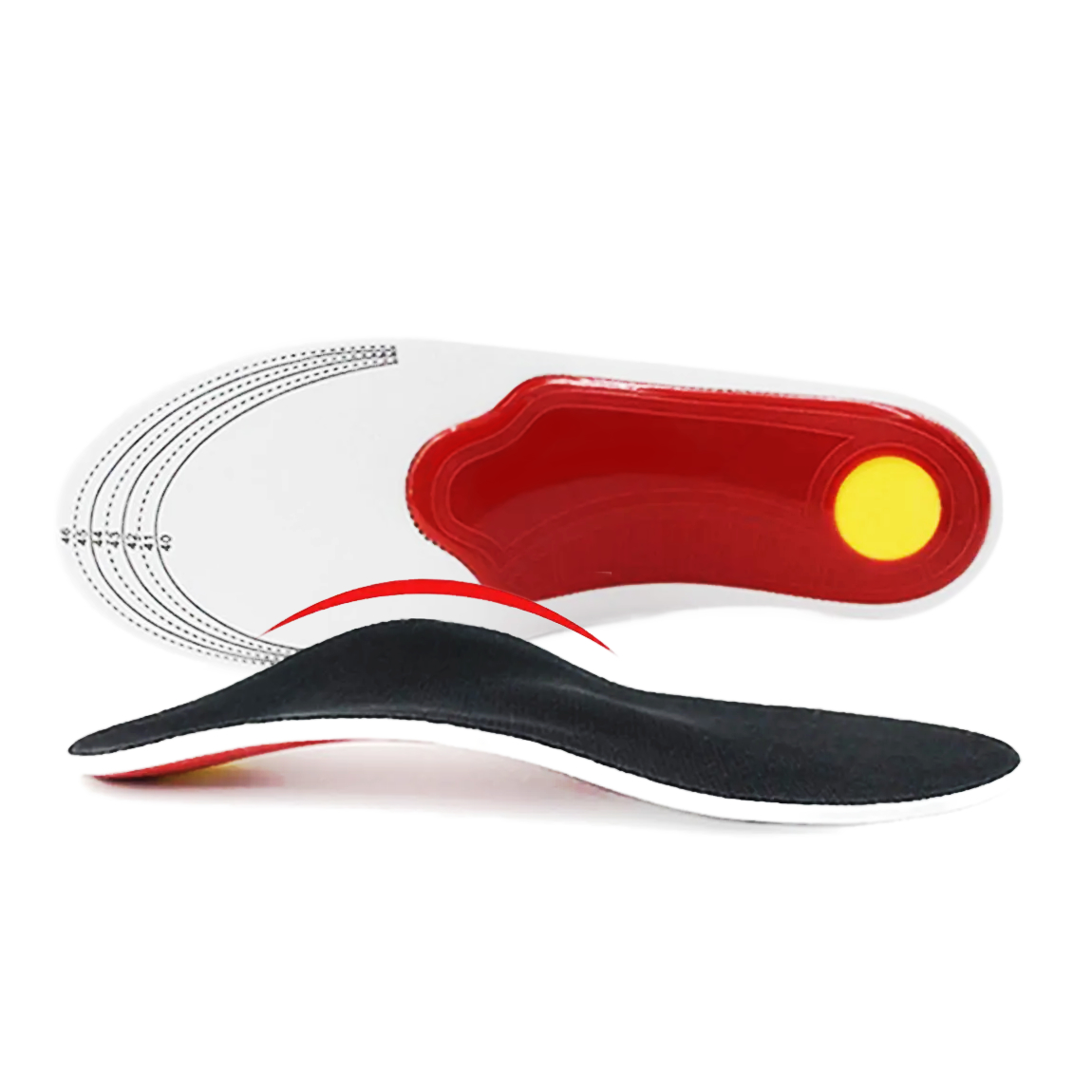
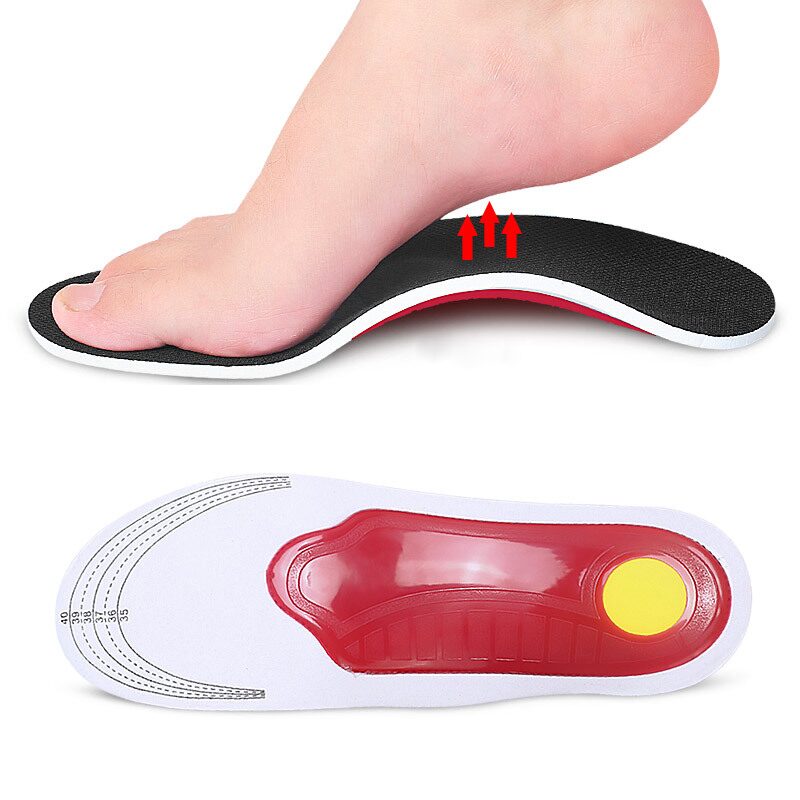
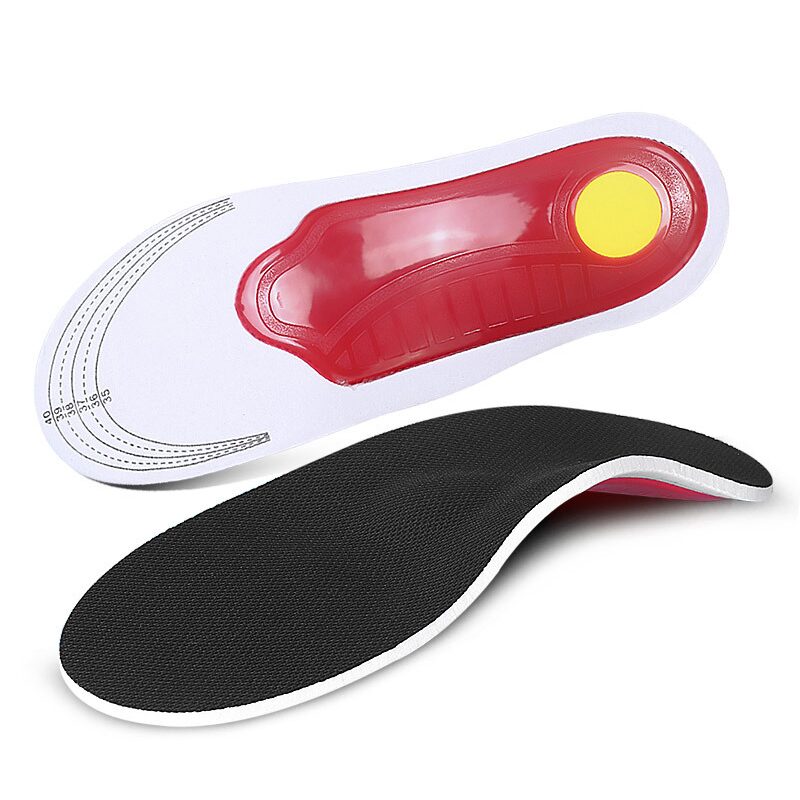

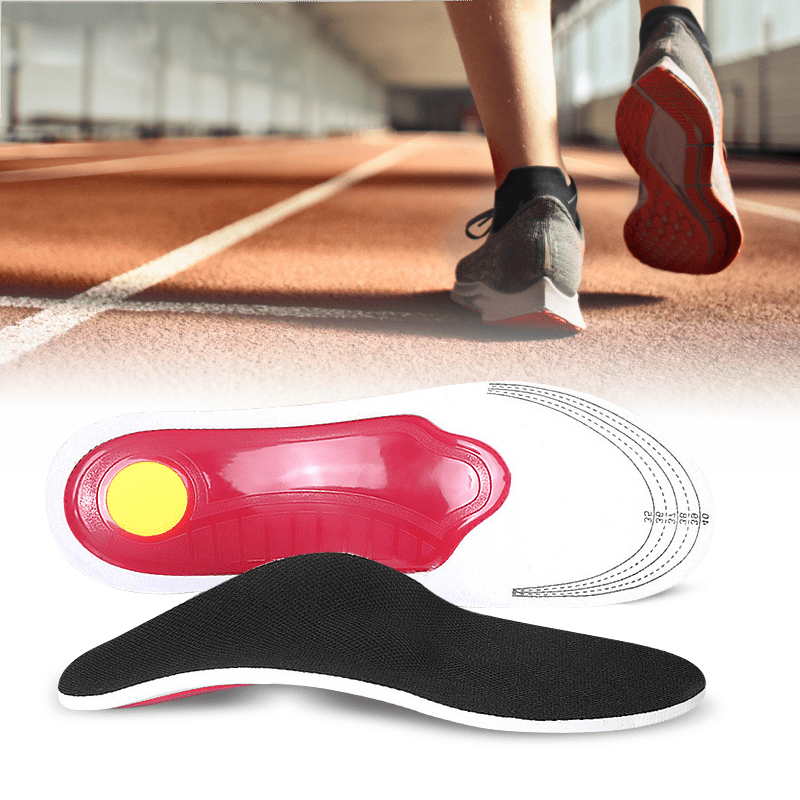
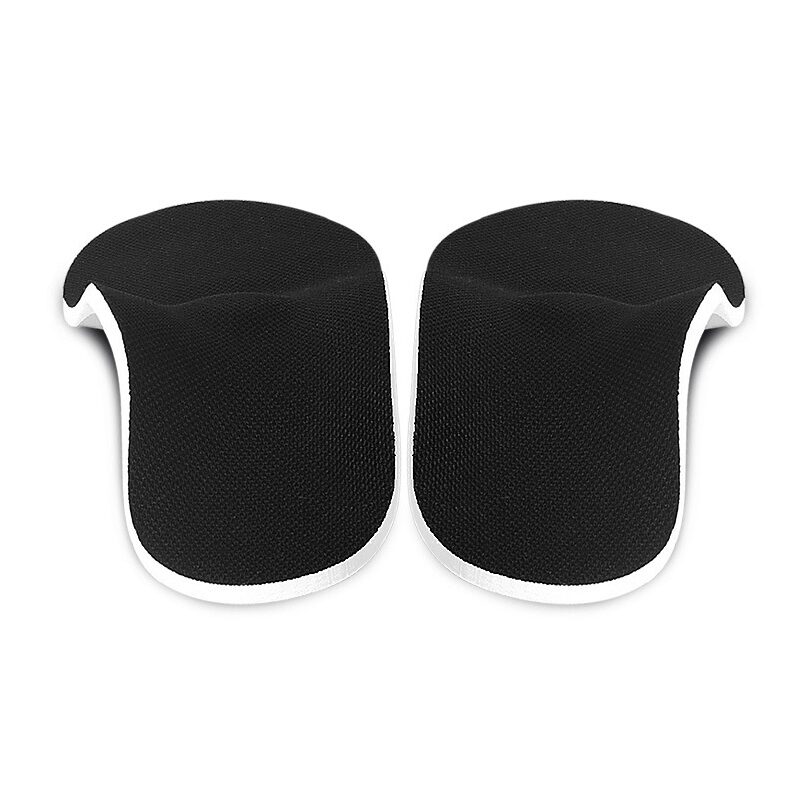
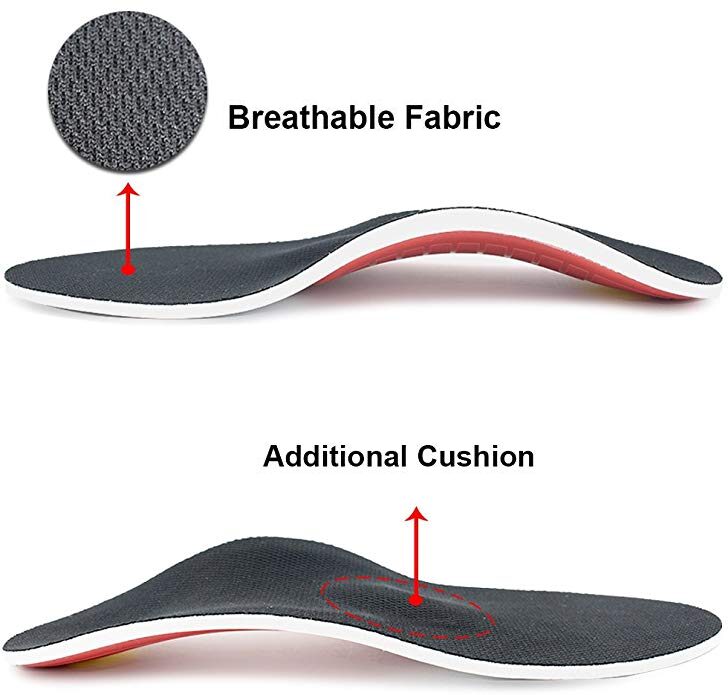

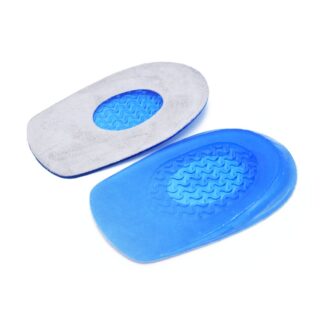
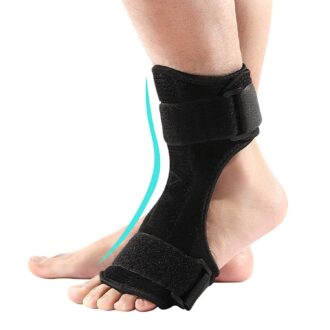
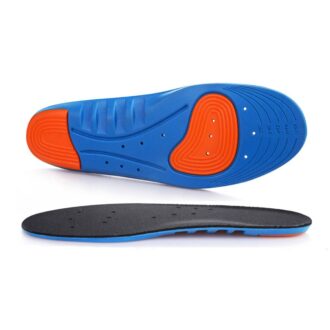

by David
I’ve had a great experience with these insoles. I would definitely recommend them to anyone struggling with foot pain. They’re worth every penny.
by George Garcia
I’ve been using them for a few weeks now and my old nemesis, heel pain, is practically a memory. Love the shock absorption feature too. A top-quality product!
by Jacob
I purchased these orthotic insoles due to constant discomfort, aching feet from my long standing hours at work. They have been a great addition to my footwear. The arch support is excellent and you can really feel it makes a difference. These insoles also do a fab job in cushioning and absorbing shock, making my daily strolls even more enjoyable. I’ve noticed less strain on my lower limbs too. The only reason I’m giving it 4 stars is because it took me a bit of time to get used to them. But once I did, they’ve been great!
by Emma
I purchased these insoles after a particularly nasty bout of Achilles tendonitis that had left me hobbling around for weeks. I had tried various treatments, but nothing seemed to provide lasting relief. A coworker recommended these insoles, so I decided to give them a try.
Breaking them in took about a week, but once they adapted to my foot shape, the difference was night and day. The insoles realigned my feet into the correct position, which noticeably reduced the strain on my Achilles tendon.
The slim fit meant they didn’t crowd my shoes, and they were easy to cut to the right size without any hassle. These insoles have definitely made a positive impact on my daily comfort and mobility.
by Olivia Smith
So glad I found these! 🌟 After my morning runs, my feet would be on fire due to plantar fasciitis. These insoles are a dream. Slid them into my running shoes and haven’t looked back. They provide the perfect cushioning and support. I’m running longer and feeling stronger. Love them!